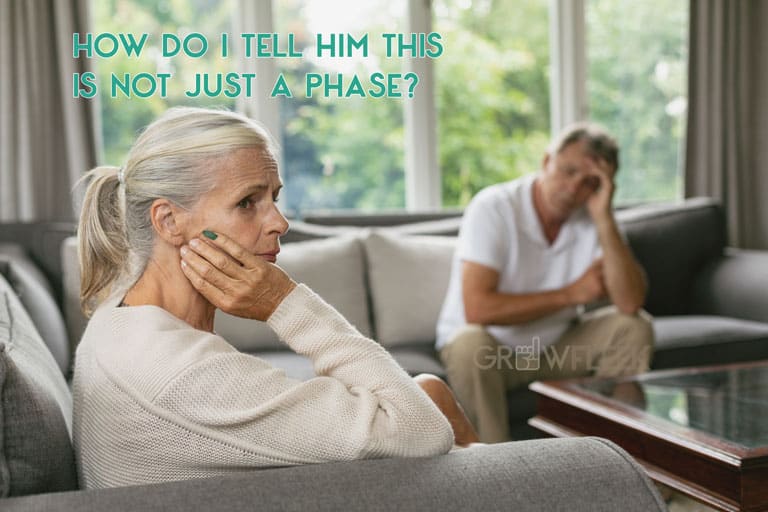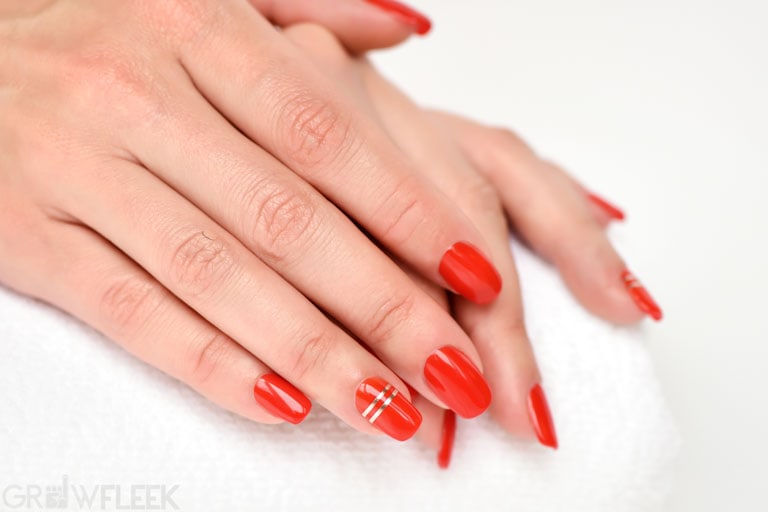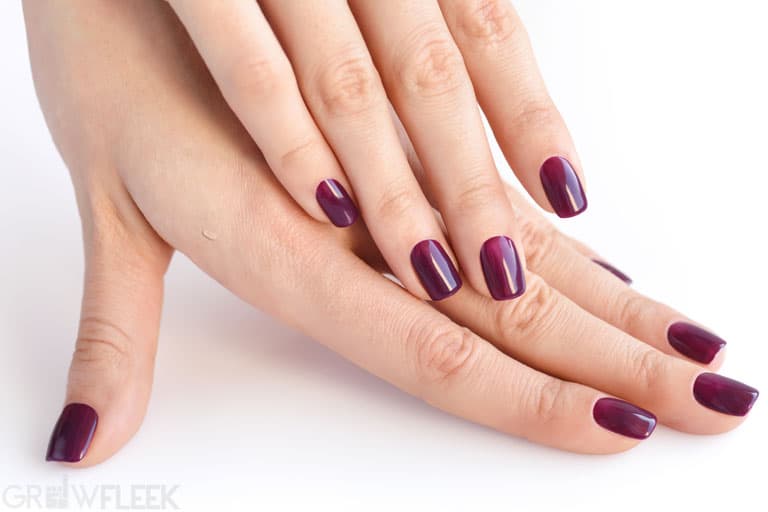Afraid fake nails might damage your healthy cuticles? Stop worrying by looking over the pros and cons on natural vs acrylic nails. Once you decide on that, the second consideration is the shape style.
Natural Nails
The never out of style natural nails provide is probably its most celebrated quality. They are by far the more popular choice for growing out your coke nail.
This is because natural nails require the least amount of maintenance, all the while lasting longer (If properly cared for).
Simplicity can be beautiful, but the all-natural look really gets ‘on fleek’ with a stroke of nail polish.

Fake Nails
For some people, long natural pinky nails are more preferred.
The trouble is, soft nails will sooner than later break as they grow longer. Those of us who weren’t born with powerful nails, the next best thing are fake nails.
There are fairly enormous selections to choose from when going down the fake nails path to fleekness. The two most favored types of fake nails however are acrylic and gel.
Organic natural nails have a bit of flex in them, but fake nails on the other hand. These things are less forgiving and rigid. Also, the constant use of Acetone is not the best for healthy nail growth.

Acrylic Nails For Pinky Coke Nails?
Usually the most common choice between the two Acrylic nails is easily available.
Applying this nail type requires that your natural nails have been thoroughly cleaned and lightly scraped.
This is so the adhesives can keep the fake nails from sliding off. Before the stuff settles, you can shape customs with your unique nail shape.
The making of acrylic nails is a conjure of monomer liquid mixed with polymer powder.
The coating makes them more durable and easier tagged up with your favorite nail polish. ( Typically chip free for 10 – 14 days )
Biggest Fails For Acrylic Nails
The nasty chemical odor during the application process of acrylic nails. This is a big turnoff for some people.

Gel Nails For Pinky Coke Nails?
Similar to acrylic nails, gel nails require an initial cleaning of the natural nails before application. The concoction of chemicals that mix to make gels nails is also similar to acrylic nails.
The part they differ is that gel nails need to be ‘cured’, which basically means they get air dried under a UV lamp. This process makes gels nails to be avoided back-to-back because it’s leads to brittle nails that break.
Biggest Fail For Gel Nails
Since gel nails require added equipment and arduous application the hardest for the DIY type and because of that is a popular choice at beauty salons.
Which Is The Healthiest Fingernail Choice?
Comparing the three, natural nails have the most flexibility. The other two are stronger but more likely to chip. Acrylic nails are the most customizable, and Gel is the balanced (most expensive) choice.
Comparing the three, natural nails have the most flexibility. The other two are stronger but more likely to chip. Acrylic nails are the most customizable, and Gel is the balanced (most expensive) choice.
Avoid unfleek nails by staying hydrated. When 15 cups a day are not enough, we recommend applying cuticle oil daily.
SOURCES
- Yaemsiri, S., et al. “Growth Rate of Human Fingernails and Toenails in Healthy American Young Adults.” Journal of the European Academy of Dermatology and Venereology: JEADV, vol. 24, no. 4, 1 Apr. 2010, pp. 420–423, pubmed.ncbi.nlm.nih.gov/19744178/, 10.1111/j.1468-3083.2009.03426.x. Accessed 17 Jan. 2021.
- Baden, Howard P. “The Physical Properties of Nail**From the Department of Dermatology. Massachusetts General Hospital and Harvard Medical School, Boston, Massanchusetts 02114.” Journal of Investigative Dermatology, vol. 55, no. 2, Aug. 1970, pp. 115–122, 10.1111/1523-1747.ep12291628. Accessed 5 Jan. 2021.
- Yaemsiri, S., et al. “Growth Rate of Human Fingernails and Toenails in Healthy American Young Adults.” Journal of the European Academy of Dermatology and Venereology: JEADV, vol. 24, no. 4, 1 Apr. 2010, pp. 420–423, pubmed.ncbi.nlm.nih.gov/19744178/, 10.1111/j.1468-3083.2009.03426.x.
- Chou, Shang-Lin, et al. “Cessation of Nail Growth Following Bajiaolian Intoxication.” Clinical Toxicology, vol. 46, no. 2, Jan. 2008, pp. 159–163, 10.1080/15563650701397159. Accessed 17 Jan. 2021.Accessed 17 Jan. 2021.
- Rieder, Evan A., and Antonella Tosti. “Cosmetically Induced Disorders of the Nail with Update on Contemporary Nail Manicures.” The Journal of Clinical and Aesthetic Dermatology, vol. 9, no. 4, 1 Apr. 2016, pp. 39–44, www.ncbi.nlm.nih.gov/pmc/articles/PMC4898583/.




